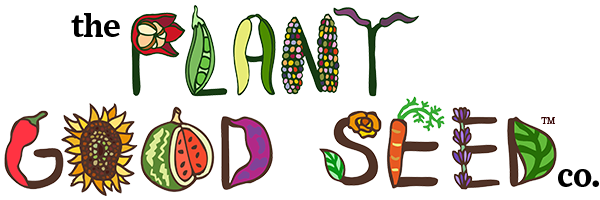Devil's Claw / Unicorn Plant produces mature woody capsules that are used in indigenous basket weaving; immature okra-like pods are edible.
Devil's Claw / Unicorn Plant (Proboscidea louisianica) is a rugged, low growing shrub in the Martyniaceae family. It is predominantly grown for its mature seed pods, which are hooked and used for basket weaving. However, the plant is also edible! Immature pods can be cooked like okra, and mature seeds can be shelled and eaten like sunflower seeds.
Edibility is definitely an acquired taste. As the plants grow, all parts exude an oily resin, which is acrid smelling and traps bugs. This is considered a carnivorous plant to some. I personally enjoyed eating the pods, because we had a large okra crop failure the same year and I was excited to try something similar. Definitely not as gooey or mushy as okra though.
Starting Devil’s Claw seed is relatively easy, but note that germination rates depend upon how the seeds are treated prior to planting. When simply planted in their outer black, rough shell, expect germination to be sporadic. However, the seed shell can also peeled back to increase germination rate. Think of how a sunflower seed has an inner kernel. It’s the same for devil’s claw. Do-so carefully, without damaging the seed.
In Southern California (Zone 9b) we started our seed in early May. That works fine for a climate with a mild fall, but you could certainly seed devil’s claw earlier if you are concerned about cold fall/winter temperatures killing plants before you get any substantial yield.
Plants are not picky about soil type or fertility, although if growing for edible use, a standard vegetable fertilizer and soil type can be helpful with pod production. If growing for immature pods, harvest when they are young, green, and tender. Plants have an acrid smell and the foliage and pods oily, so handle with care later on. It isn’t caustic, it just smells not so good.
As plants become established they become extremely hardy and fast growing. Consider limiting waterings, as they form considerable mats - anecdotally, I’ve read of plants that form 30 foot wide areas!
Pods are mature when they shed their outer husks. Use a garden pruner and gloves to harvest.
There is a wonderful body of free literature that focus Devil’s Claw and its uses; here are a few that I’ve found useful:
-quin (January 2024)
Collections: All Products Devil's Claw New and Returning Varieties
We use cookies on our website to give you the very best shopping experience we can. By using this site, you agree to its use of cookies.
Emails every 4-6 weeks featuring compelling original gardening content, new variety announcements, sales, and event appearances.
